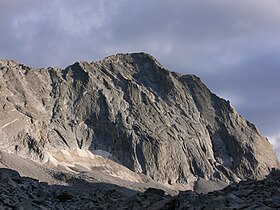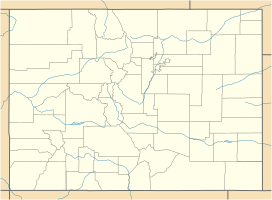Capitol Peak (Colorado)
| Capitol Peak | |
|---|---|

Capitol Peak, from Capitol Lake
|
|
| Highest point | |
| Elevation | 14,137 ft (4309 m) NAVD88 |
| Prominence | 1750 ft (533 m) |
| Isolation | 7.44 mi (11.98 km) |
| Listing | |
| Coordinates | 39°09′01″N 107°04′59″W / 39.1502596°N 107.0829396°WCoordinates: 39°09′01″N 107°04′59″W / 39.1502596°N 107.0829396°W |
| Geography | |
|
|
|
| Location | Pitkin County, Colorado, U.S. |
| Parent range | Elk Mountains |
| Topo map |
USGS 7.5' topographic map Capitol Peak, Colorado |
| Climbing | |
| First ascent | 1909 by Percy Hagerman and Harold Clark |
| Easiest route | Northeast "Knife" Ridge: exposed Scramble, class 4 |
Capitol Peak is a high and prominent mountain summit in the Elk Mountains range of the Rocky Mountains of North America. The 14,137-foot (4,309 m) fourteener is located in the Maroon Bells-Snowmass Wilderness of White River National Forest, 8.7 miles (14.0 km) east by south (bearing 104°) of the community of Redstone in Pitkin County, Colorado, United States.
Capitol Peak lies on the long ridge connecting the heart of the Elk Mountains with Mount Sopris to the northwest. Capitol Peak is notable for its impressive vertical relief, rising nearly 9,000 feet above the Roaring Fork Valley.
Capitol Peak is one of the most difficult of Colorado's fourteeners to climb. The only non-technical route, the Northeast Ridge, requires crossing the famously exposed "Knife Edge," the northeast ridge of Capitol. Fatalities have occurred on this route. Other routes require technical rock climbing, for example, the Northwest Buttress Route (Grade IV, Class 5.9). These routes have significant rockfall danger due to a great deal of loose rock; however, the rock is substantially more solid than on the more famous Maroon Bells or on Pyramid Peak.
...
Wikipedia

